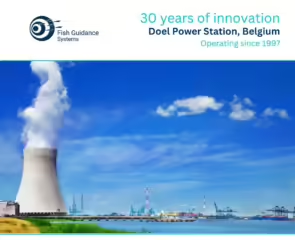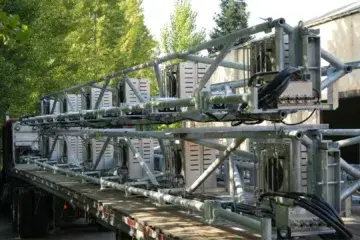Nuclear reactors require a lot of cooling – that’s why they are commonly found in coastal areas, where there is an abundance of water to draw in and keep the temperature of the sea at acceptable levels.
A side effect of pulling vast quantities of water is the amount of fish that are also pulled in with the flow. These fish can begin to clog the intakes and filters, resulting in costly shutdowns, and damaging both the plant and the surrounding ecosystems.
This is specifically an issue in the North Sea and English Channel area, due to the presence of herring and sprat.
French Nuclear Power Plant Shutdown
In January, a French nuclear power plant had to disconnect all four of their reactors after a ‘significant and unforeseeable’ number of fish clogged their filter drums. However, this issue is both foreseeable and preventable.
Over the last 60 years, there have been numerous incidents of fish shutting down nuclear plants. Kincardine Generation Station reported this in 1962, and the same issues are still occurring, most recently at the Paulel nuclear power station, in France. These incidents are global – with similar issues being reported in Israel, South Africa, South Korea and The United States.
Sizewell Nuclear Power Station ,(the location of the new nuclear plant Sizewell C which is currently being considered by the UK Government) has been inundated by fish throughout its history, with other UK plants reporting similar incidents from as far back as the 1960s.
Acoustic Fish Deterrent
One of the potential ways to avoid fish from being drawn into the intakes of nuclear power plants is to install an acoustic fish deterrent (AFD). This uses sound to influence the behaviour of fish and helps to deflect and deter it from entering the intakes.
These systems have been installed at several power stations, including the nuclear plant at Doel in Belgium. However, both nuclear plants being built in the UK at the moment are either fighting the requirement for their installation, or have not included them into the planning application.
The Environment Agency 2010 report highlights that direct sea water cooling is the best available technology and was highlighted in the integrated Pollution Prevention and Control Directive in 2003. However, this means that best practice in planning, design, mitigation and compensation have to be followed. This would include the use of acoustic fish deterrents as described in the 2005 Environment Agency best practice report.
David Lambert, Managing Director of Fish Guidance Systems has stated “We have spent over 25 years working on acoustic fish deterrents (AFD) and we know that AFDs can reduce sprat entrainment by 87.9 which aids in the prevention of fish inundation at nuclear power plants.”
A Brief History of Fish Shutting down Nuclear Power Plants
Reported Examples in the UK
Kincardine Generating Station, Scotland, 1962:
This power station became overwhelmed with Sprat clogging the drum screening chambers on the 19th December 1962. It was taken out of service on the 19th because it was impossible to keep its auxiliary cooler strainers clean. It was returned to service until the 23rd, but then it became necessary to clean the main condenser. On the 27th it was again restored to service.
Sizewell A Power Station, January 1969:
1967 was a particularly abundant year for the sprat population along the east and south east coast of England. As much as 70% came from the suffolk coast. It first became clear that the numbers of sprat were high in the second week of November 1968. This was because large concentrations of shoals had begun to build along the Suffolk coast.
January 10th 1969 – a large quantity of sprat rapidly clogged the filter screens to the point that the weight was enough to break through the screens and into the plant. The local inspector of fisheries estimated that fish had been washed ashore over a total of 6-7 miles, weighing around 30 tonnes.
Dungeness Power Station 1969:
This incident took place in January 1969, about a week after the incident at Sizewell. It seemed to be an exact carbon copy of what happened at Sizewell. Both Sizewell and Dungeness intakes are both situated in potential danger zones regarding sprat shoals.
Dungeness Power Station 1999
More recent inundations have also been reported at Dungeness, in 1999 the band screens were damaged during a sprat inundation, and the screens had to be refurbished.
Dungeness Power Station 2000
In February 2000 the station was closed for three days at a cost of more than £1m when a large shoal of sprat was drawn into the two intakes and inundated the cooling water system, overwhelming the cleaning capacity of the band screens.
Other sites around the UK have also been affected by fish inundations in the past, including Longannet, Kincardine Bridge and Peterhead.
Europe examples:
EDF, France: January 2021:
Electricite de France SA had to disconnect all four reactors at its Paluel nuclear plant, located on France’s north coast because a “significant and unforeseeable” number of fish got stuck within the filter drums of the cooling station. The station draws in sea water for cooling, exposing it to a range of environmental hazards.


